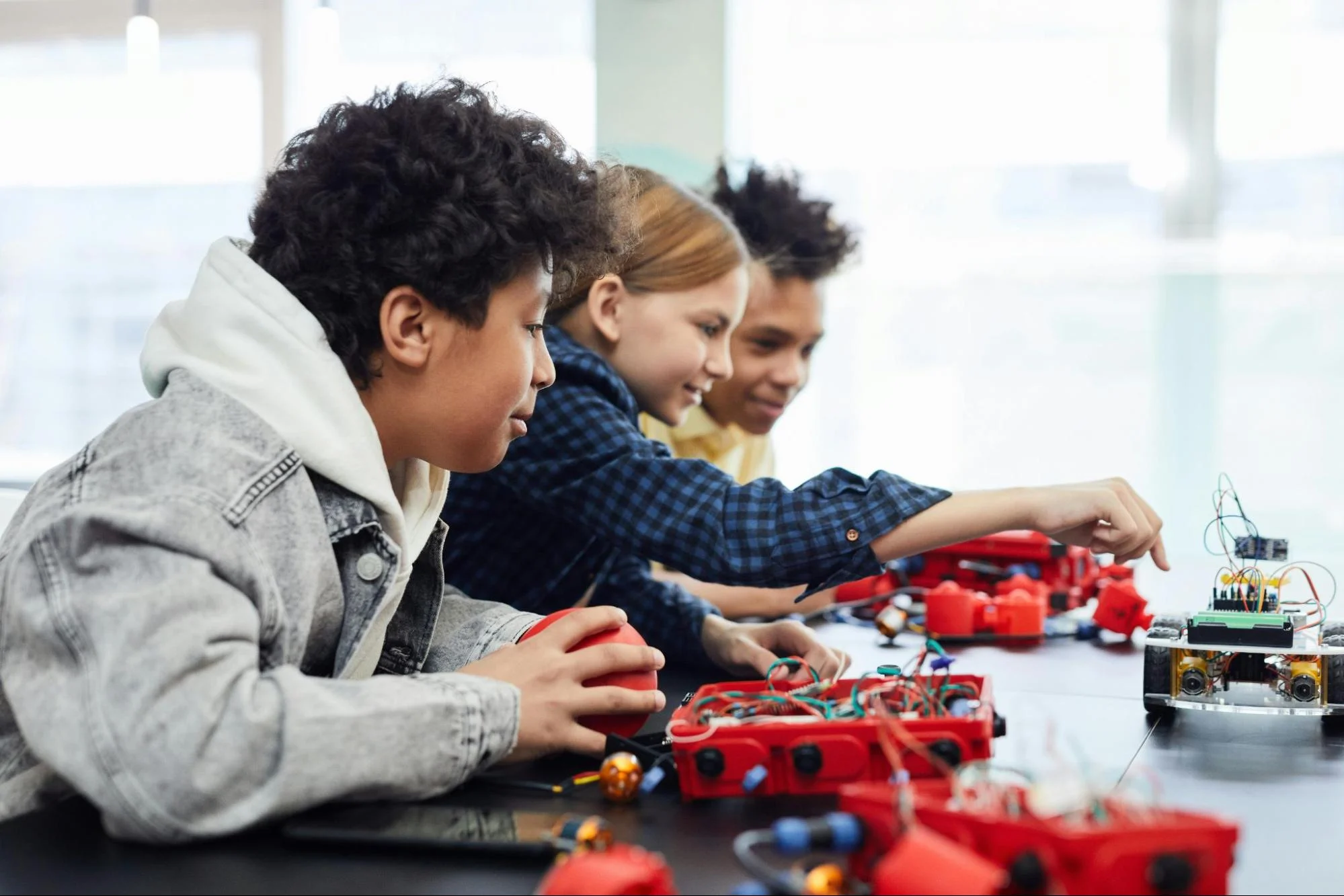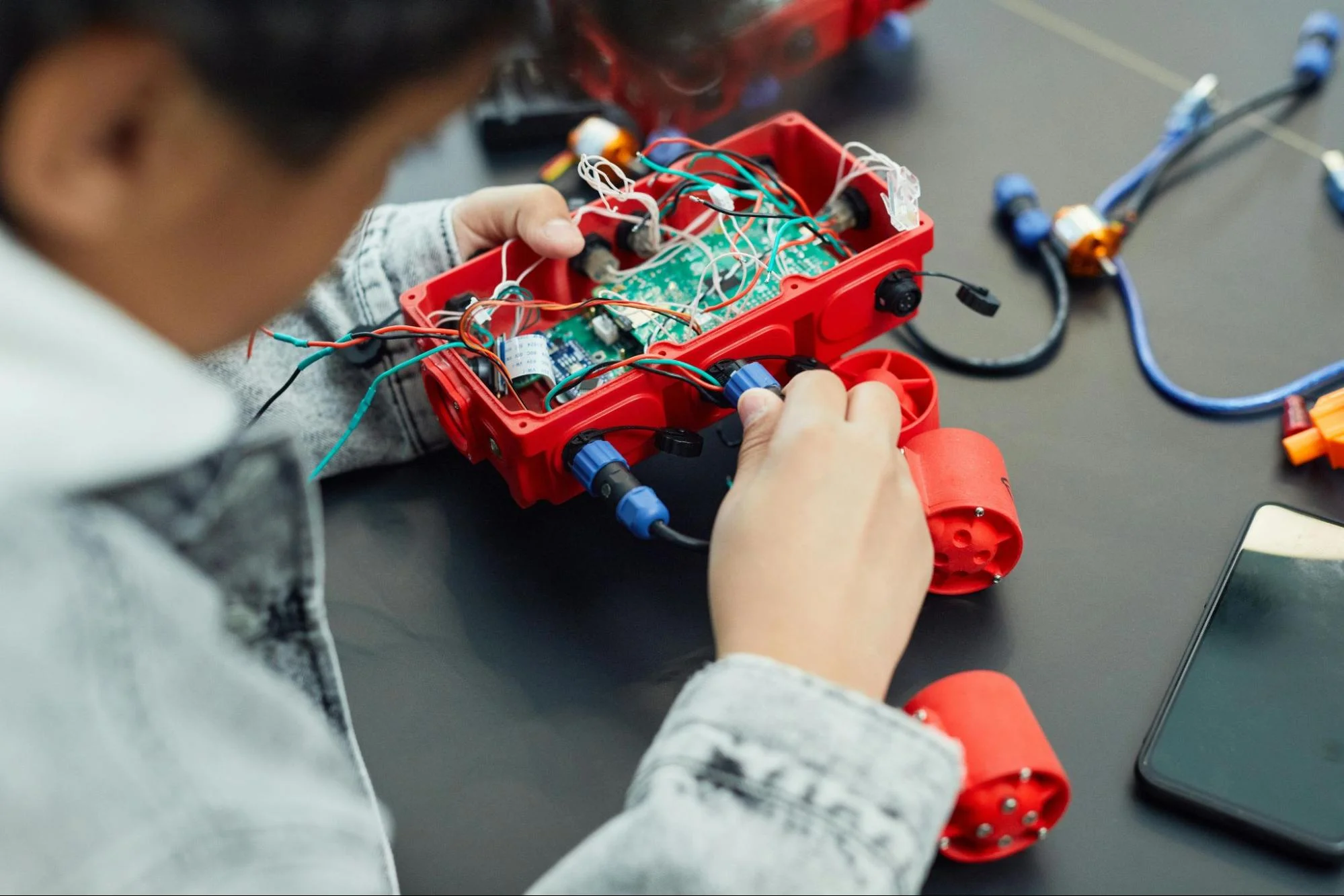
Update: This article was last updated on January 6, 2026, to reflect the accuracy and up-to-date information on the page.

Robotics and coding go hand in hand and are an exciting area of Computer Science. Introducing your child to robotics at a young age is a great way to spark interest in STEM (Science, Technology, Engineering, and Math). But before diving into robotics and coding, it’s essential to understand what a robot is.
A robot is an independent machine that performs specific tasks using information it receives from sensors. However, a robot is just a mechanical device until it’s brought to life through programming. Beyond coding, many students are now becoming more interested in robotics. Thanks to modern, engaging teaching methods, learning robotics is easier and more enjoyable than ever before.
If you’re thinking about introducing your child to robotics and coding—two fascinating aspects of today’s tech world—this blog will be a helpful guide. Keep reading to learn more!
What Are Robotics and Coding?

Robotics is the field of technology that involves designing, building, and programming robots to perform tasks. Robots can range from simple machines that follow basic instructions to complex systems that can make decisions and complete sophisticated tasks on their own. Robotics combines several disciplines, including engineering, computer science, mechanics, and electronics.
Coding, also known as programming, is the process of writing instructions in a language that computers or machines can understand. In robotics, coding is what tells a robot how to behave and what tasks to carry out based on input from sensors or data. Without coding, a robot is just hardware—it’s the software or code that enables it to function.
Together, Learning coding, robotics, and other tech hobbies allows kids to create machines that can automate tasks, solve problems, and even interact with the world in intelligent ways.
Why is coding important?
Coding plays a crucial role in today’s increasingly digital world. Education is no longer just about memorizing facts, especially when information is so easily accessible. Instead, we need to focus on teaching kids how to think critically and solve problems. One of the most effective ways to do this is by providing them with tools like coding, which helps them develop the skills to find the best possible solutions.
What is a Good Age to Start Coding?
The best time to start coding is when kids are still young, often in elementary school. With technology playing such a big role in the future, learning to code early is more important than ever. Coding introduces kids to a world of exciting opportunities and helps them develop critical thinking skills. While learning has no age limit, younger minds tend to absorb new information more easily. The ideal time to start coding is around the same age that children begin learning to read and write. That’s why Coding Classes for Kids are a great way to spark their interest early on.
The Benefits of Starting Early
The sooner children start, the more comfortable they become with complex subjects. Brain Plasticity at a Young Age: Young children have high brain plasticity, meaning they can absorb and retain information quickly. Introducing coding and robotics early takes advantage of this, making it easier for them to understand and retain complex concepts.
What is a Good Age to Start Coding?
Kids can start coding as early age as young as 5, and the best age depends on when coding is introduced. With age-appropriate tools, coding becomes fun, visual, and easy to grasp. When children learn robotics and coding, they gain a variety of valuable skills, including enhanced critical thinking. They explore different ways to solve problems and learn how to select the best solution for each challenge. Additionally, hands-on learning helps boost students’ focus and attention. 5 Reasons that prove coding, robotics, and AI are crucial skills for your child.
Some of the key skills they develop are:
- Adaptability: As technology evolves rapidly, students become better prepared to navigate and adapt to these changes.
- Collaboration: Working in teams, students learn how to collaborate effectively to modify their robots for dynamic challenges.
- Programming Proficiency: Beyond just writing code, students discover innovative ways to approach problem-solving.
- Analytical Thinking: For complex robotics challenges, students learn to break down large problems into smaller, manageable parts and then find solutions.
- Communication Skills: Both written and verbal communication are critical throughout life, and learning robotics helps students strengthen these essential skills.
How to Introduce Kids to Coding and Robotics
Curious about how to get your kids started with something as complex as coding and robotics? Here’s a simple guide to help:
- Start with Hands-On Toys Like Legos or Mechanix: Begin by giving your children toys like Legos or Mechanix. These toys help kids explore technical concepts while sparking their creativity. They also develop important skills like problem-solving, logical thinking, and creativity. Once your child becomes familiar with these, introducing coding and robotics will feel more natural.
- Work on DIY Robotics Projects Together: Spend quality time with your kids on DIY robotics projects. These kits are designed for various age groups and experience levels, making them accessible for beginners. Popular kits include the Embedded Learner Board, Traffic Light DIY Kit, and Mini Robot Bug. Doing these projects during school breaks or weekends can turn learning into a fun, hands-on activity.
- Share Educational Media and Articles: Keep your children engaged by sharing educational YouTube videos, articles, and online communities related to coding and robotics. Kids today enjoy learning from a variety of resources, and this can keep them updated on the latest trends in technology.
- Sign Them Up for Tech Boot Camps: Look out for coding and robotics boot camps or workshops designed for kids. These programs offer hands-on experience and help children build essential skills in a structured environment. Find age-appropriate programs and encourage your kids to participate.
- Enroll in Virtual Coding and Robotics Classes: There are many reputable online or in-person coding workshop courses available for kids. These virtual classes offer flexibility and can be a great way for your child to develop a deeper understanding of technology from the comfort of home.
Practical Tips for Parents Introducing Robotics and Coding
Set Realistic Expectations: When kids start coding or working with robotics, it’s essential to set realistic expectations. Avoid overwhelming them with complex tasks and encourage incremental learning. Start with simple projects that spark excitement and gradually move to more complex challenges.
Explore Interest-Based Projects: If your child is interested in a specific topic—like animals, sports, or games—consider finding coding and robotics projects that align with those interests. For example, building a robot that mimics animal behavior or creating a simple sports simulation game can make learning more engaging and fun.
Conclusion
In the coming years, coding and robotics will play a dominant role in shaping the future. If you want your children to succeed and stand out from their peers, now is the perfect time to introduce them to these fields. The earlier they begin learning about coding and robotics, the sooner they’ll see benefits in both their academic performance and career opportunities.
Want to make your child future-ready with Robotics? Moonpreneur offers a tailor-made program. Reserve a spot in our free 60-minute workshop today and introduce them to the amazing world of robotics and innovations!

























What are some fun ways to introduce robotics and coding to kids who might be new to the subjects?
Engage kids with interactive games, like coding puzzles or robot-building kits, fostering curiosity and creativity while making learning enjoyable and hands-on.
How can kids start preparing now for a career in robotics or coding?
Kids can begin by exploring online tutorials, joining coding clubs, attending workshops, and experimenting with robotics kits to develop fundamental skills and passion early on.